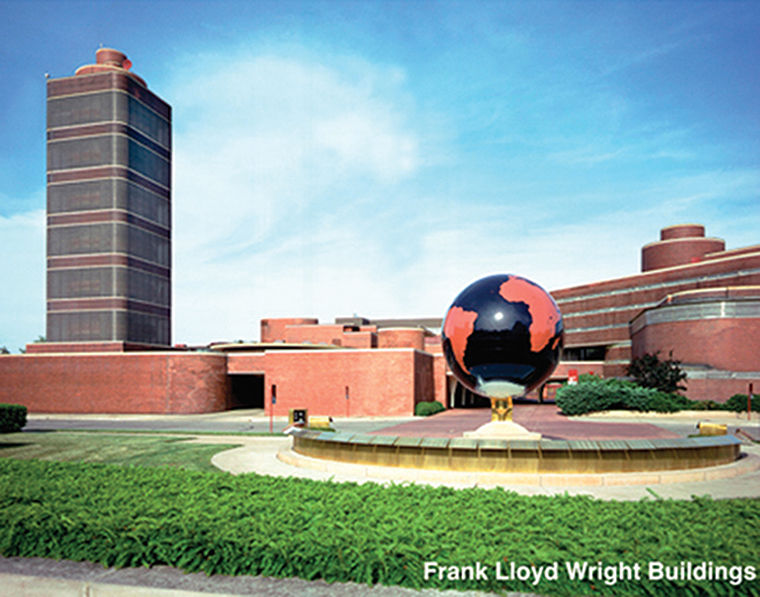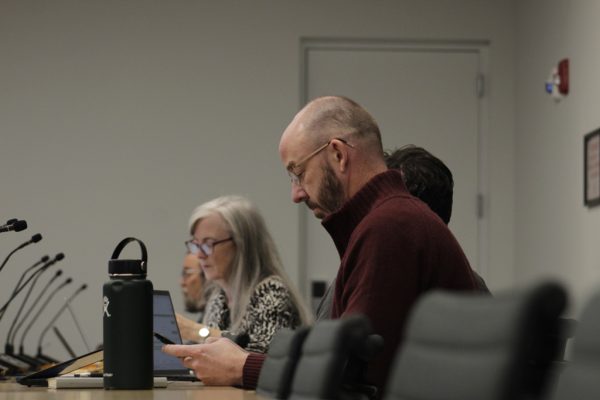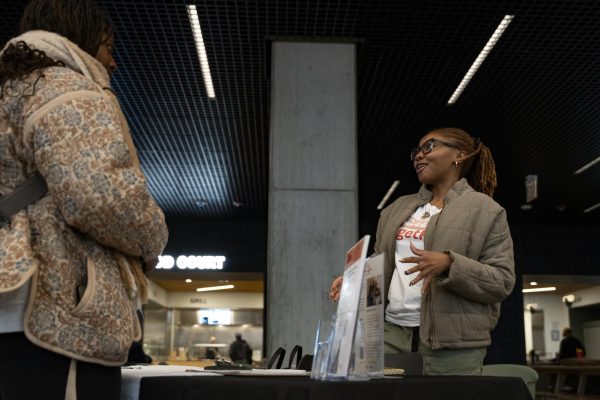Chicago hosts first North American architecture biennial
October 5, 2015
Chicago has long been known as the birthplace of modern architecture and now has the distinction of hosting North America’s first architecture biennial.
Chicago’s inaugural architecture biennial runs from Oct. 3–Jan. 3 and is part of Mayor Rahm Emanuel’s 2012 Chicago Cultural Plan to guide the city’s cultural and economic growth.
“There is no better host city than Chicago for this important global event,” Emanuel said in an April 14 press release. “The Chicago Architecture Biennial offers a welcome opportunity to celebrate the architectural, cultural and design advancements shaping our world.”
The biennial includes free events spanning the city, including performances, lectures, exhibitions, tours and social events. According to a Sept. 11 press release, the biennial will explore issues at the heart of the practice of architecture while offering the public ways to engage and ask their own questions.
The main location for the biennial will be the Chicago Cultural Center, 78 E. Washington St. The Cultural Center will host an exhibition with new and innovative projects. This is the first time the entire building will be used for a single exhibition, according to an April 14 press release.
“I think everybody recognizes Chicago has, ever since the [Great Chicago Fire], been a leading city for architecture, but the biennial is delving into subgenres of architecture,” said Neysa Page-Lieberman, director of the Department of Exhibitions, Performance & Student Spaces at Columbia.
Columbia has partnered with the biennial, putting a spotlight on the four exhibitions that will be held at four of the college’s galleries and museums, Page-Lieberman said.
“I called my colleagues from the spaces to talk about approaching the biennial as a partner institution,” Page-Lieberman said. “The whole biennial team was very receptive, and they were really excited about our projects.”
The exhibitions will be hosted at The Glass Curtain Gallery, 1104 S. Wabash Ave.; the Averill and Bernard Leviton A+D Gallery, 619 S. Wabash Ave.; the Museum of Contemporary Photography, 600 S. Michigan Ave.; and The Arcade, 618 S. Michigan Ave.
The Glass Curtain Gallery is currently hosting the three-project exhibit “Vacancy: Urban Interruption and (Re)generation.”
“[The exhibit] focuses on three artists [and] architects that work in neighborhoods in Chicago that have a disproportionate amount of vacant land, houses or businesses,” Page-Lieberman said. “They are all responding to this emptiness and choosing to interpret [it] as openness and possibilities.”
Page-Lieberman said she approached the Interior Architecture department about doing a student show at The Arcade, and they are now creating the exhibit as part of a class.
In addition, the biennial will conduct free bus trips to Racine, Wisconsin, for people to tour the two buildings designed by Frank Lloyd Wright for the SC Johnson headquarters. The tours leave from the Cultural Center every Thursday through Sunday until the biennial is over. Reservations for the tours may be made at the festival website.
“We are proud to help sponsor Chicago’s celebration of architectural achievements,” said Fisk Johnson, SC Johnson chairman and CEO in an April 14 press release.
Chicago’s Lake Michigan shoreline will see four kiosks creating new public spaces along the lakefront. The kiosks were part of a competition created in order to enhance the lakefront. The competition received more than 400 submissions from more than 40 countries, and one was chosen to receive the prize money and the space for their project, according to a press release.
“We were excited to see a team use the opportunity of the kiosk to create a generous public space that could facilitate programs and catalyze new activities on the lakefront,” said Sarah Herda, co-artistic director of the Chicago Architecture Biennial, according to a press release about the winning kiosk “Chicago Horizon,” by Ultramoderne design firm.
According to a press release, the other three kiosks were created by a collaboration of an international team of architects and Chicago schools of architecture: Illinois Institute of Technology, the School of the Art Institute of Chicago, and the University of Illinois at Chicago. The four kiosks will be on display at Millennium Park until the end of the biennial when they will be moved to their permanent location on the lakeshore.
“Even modest contributions at the scale of these new kiosks can significantly enhance cultural life on the lakefront,” said Michael Kelly, general superintendent and CEO of the Chicago Park District, according to a press release.
At the time of the 1893 World’s Columbian Exposition, Chicago’s Museum of Science and Industry was known as the Palace of Fine Arts. The museum will host a virtual simulation of the Exposition in an exhibit titled “Architects of the White City,” according to Anne Rashford, director of Special Exhibitions and Business Partnerships at the Museum of Science and Industry.
“Dr. Lisa M. Snyder and the UCLA Institute for Digital Research and Education have done such an amazing job to create this modern look at Chicago’s past,” Rashford said in an Oct. 1 email. “The presentation will uncover the little-known stories behind the fair’s architects.”
Chicago residents can attend lectures given by Pritzker Prize winning architects. Architect Iker Gil is set to hold a discussion titled “BOLD: Alternative Scenarios for Chicago” about new and alternative ideas for the city Oct. 20.
“Some of the projects in the biennial are very activist in nature, and some of them are very conceptual,” Page-Lieberman said. “It’s not like designing a building, but more like providing a resource.”
Some biennial events require registration in case of over-attendance. Event information and registration can be found at chicagoarchitecturebiennial.org.







